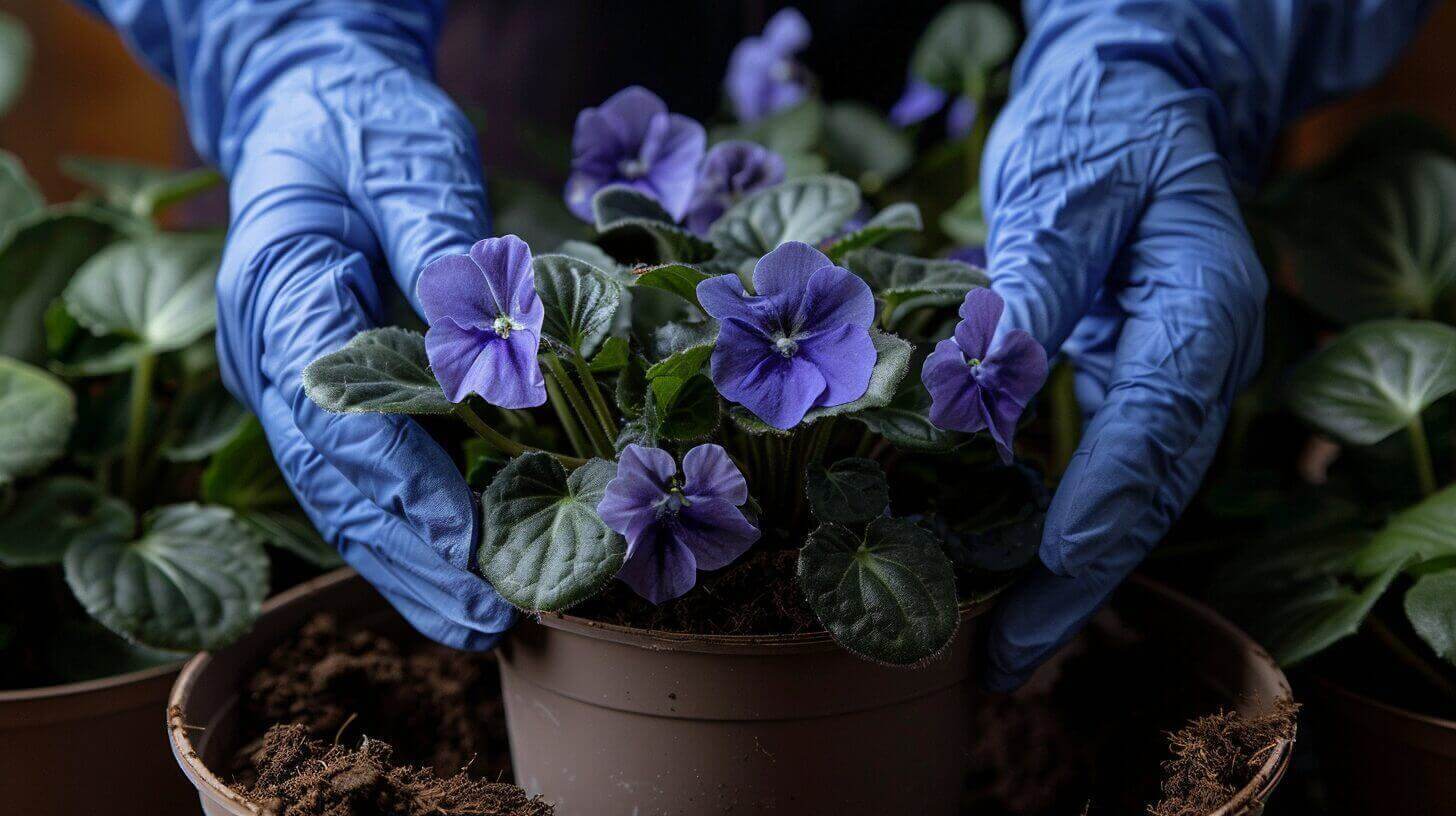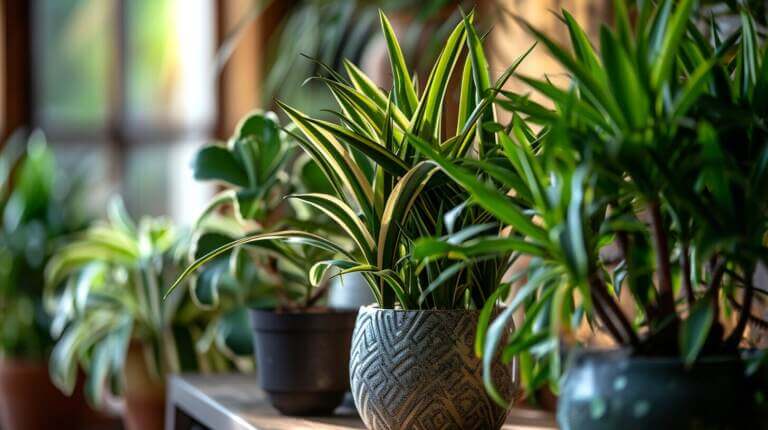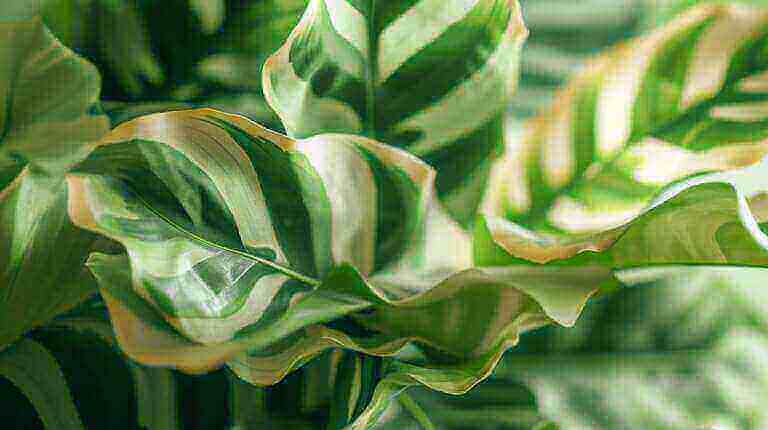Best Potting Soil Mix for Optimal African Violet Growth
African violets houseplant are a beautiful addition to any home or garden. But to ensure their optimal growth and health, it’s crucial to provide them with the right potting mix. Crafting the ideal soil mix for African violets involves a careful balance of components that promote moisture retention, air circulation, drainage, and nutrient availability.
When it comes to African violet soil, the must-have components include peat moss or eco-friendly alternatives, perlite, and vermiculite. These ingredients work in harmony to create an environment that supports root health, hydration, and nutrient uptake.
Key Takeaways:
- Potting mix is crucial for the optimal growth and vibrancy of African violets.
- Components like peat moss, perlite, and vermiculite provide moisture retention, drainage, and air circulation.
- Creating the perfect soil mix involves blending these components in the right ratios.
- African violets thrive in slightly acidic soil with a pH between 5.8 and 6.5.
- Commercial potting mixes designed specifically for African violets are readily available.
The Significance of Soil Components for African Violets
African violets, with their delicate and vibrant blooms, require the right soil components to thrive. Let’s explore the significance of each soil component in crafting the perfect environment for these beautiful plants.
Peat Moss and Eco-friendly Alternatives
The use of peat moss as the base ingredient in African violet soil mixes is prevalent due to its excellent moisture retention properties. However, for those concerned about the environmental impact of peat moss harvesting, there are eco-friendly alternatives available. Coconut coir and wood/bark fiber are sustainable options that can be used as substitutes for peat moss. These alternatives not only retain moisture but also contribute to more sustainable gardening practices.
Perlite and Vermiculite
Perlite and vermiculite play crucial roles in creating a well-draining and well-aerated soil mix for African violets. Perlite, a volcanic mineral, promotes air circulation, water drainage, and humidity retention. It helps prevent soil compaction and allows roots to breathe. Vermiculite, on the other hand, retains both water and nutrients, ensuring a steady supply for the plants. Together, perlite and vermiculite contribute to a balanced soil composition that promotes healthy growth and development.
Ideal pH for African Violets
African violets prefer slightly acidic soil with a pH range of 5.8 to 6.5. Maintaining the ideal pH is essential for the plants to absorb nutrients effectively. A pH level outside this range can lead to nutrient deficiencies or toxicities, adversely affecting the growth and overall health of the African violets. It is recommended to test the pH of the soil periodically and make necessary adjustments using organic amendments if needed.
Summarizing the Importance of Soil Components
The significance of soil components for African violets cannot be underestimated. Peat moss or eco-friendly alternatives provide moisture retention, while perlite and vermiculite ensure proper drainage and aeration. These components work together to create an optimal environment for the plants to thrive. Additionally, maintaining the ideal pH range is crucial for nutrient absorption. By understanding the significance of these soil components, gardeners can craft the perfect potting mix for their African violets, leading to vibrant blooms and healthy growth.
| Soil Component | Role |
|---|---|
| Peat Moss or Eco-friendly Alternatives | Excellent moisture retention |
| Perlite | Promotes air circulation, water drainage, and humidity retention |
| Vermiculite | Retains water and nutrients |
| Ideal pH | Slightly acidic soil (pH 5.8 to 6.5) for optimal nutrient absorption |
Crafting the Perfect African Violet Potting Mix
When it comes to African violets, crafting the perfect potting mix is crucial for their growth and overall health. A well-balanced mix ensures that these delicate plants receive the right combination of nutrients, moisture, and aeration. The ideal potting mix for African violets typically consists of three main components: peat moss, vermiculite, and perlite.
Peat moss serves as the base ingredient in most African violet soil mixes due to its excellent moisture retention properties. It helps to keep the soil evenly moist without becoming waterlogged. Vermiculite, on the other hand, aids in water and nutrient retention, allowing the roots to access essential elements for growth. Perlite is essential for promoting proper drainage and air circulation in the soil, preventing root rot and other issues caused by excess moisture.
When crafting your own African violet potting mix, consider using a ratio of 2 parts peat moss, 1 part vermiculite, and 1 part perlite. This combination provides a well-draining yet moisture-retentive blend that is suitable for these delicate plants. Additionally, you can add optional amendments such as compost or crushed eggshells to further enrich the soil with nutrients.
| Components | Benefits |
|---|---|
| Peat moss | Excellent moisture retention |
| Vermiculite | Water and nutrient retention |
| Perlite | Improves drainage and air circulation |
It’s important to note that when making your own potting mix, it is best to avoid using regular potting soil as it can be too heavy and retain too much water. African violets thrive in a lightweight, well-draining mix that closely mimics their natural growing conditions. If you prefer a convenient option, there are also commercial potting mixes specifically formulated for African violets available in the market.
Creating the perfect African violet potting mix is essential for the health and vitality of these beautiful plants. By using the right combination of peat moss, vermiculite, and perlite, you can ensure that your African violets receive the optimal balance of moisture, nutrients, and aeration they need to thrive.
Repotting and Dividing African Violets for Optimal Growth
Repotting is a crucial step in ensuring the optimal growth and health of African violets. It should be done every 2-3 years or when signs of slowed growth, yellowing leaves, or rootbound plants are observed. Repotting allows for root rejuvenation and provides room for new growth. When it comes to repotting African violets, it’s important to follow the right techniques and use the appropriate potting mix for successful transplantation.
To begin the repotting process, carefully select a slightly larger pot than the current one. This will provide ample space for the plant’s roots to spread and grow. Prepare a fresh potting mix using the ideal components such as peat moss, vermiculite, and perlite. These ingredients ensure proper moisture retention, drainage, and aeration for the plant’s roots.
To repot the African violet, gently remove the plant from its current pot, taking care not to damage the delicate roots. Loosen the old soil from the roots, ensuring they are clean and free from any debris. Inspect the roots for any signs of damage or disease. Trim any dead or rotting roots before proceeding.
Place the plant in the new pot, making sure the crown is slightly above the soil surface. Fill in the space around the plant with the fresh potting mix, ensuring that the roots are well-covered and supported. Firmly press the soil to secure the plant in its new pot. Water the plant thoroughly, allowing the excess water to drain out.
By repotting African violets at the right time and using the proper techniques, you can promote healthy growth and vibrant blooms. Remember to observe the signs of repotting need and provide the necessary care to ensure your African violets thrive.
Table: Signs of African Violet Repotting Need
| Signs | Action Required |
|---|---|
| Slowed growth | Repot the African violet to provide fresh nutrients and room for root growth. |
| Yellowing leaves | Inspect the roots for signs of rot or disease. If necessary, repot the plant using fresh potting mix. |
| Rootbound plant | Transfer the African violet to a slightly larger pot to allow the roots to spread and grow. |
Where to Buy Quality Pre-Made African Violet Potting Mixes
If you’re not up for the messy task of mixing your own potting mix, don’t worry! There are plenty of quality pre-made mixes available that are specifically formulated for African violets. These mixes can save you time and ensure that your plants have the right balance of components for optimal growth.
Some popular brands that offer African violet-specific potting mixes include Espoma, Miracle-Gro, Sun Gro, and rePotme. These trusted brands have developed mixes that contain the necessary ingredients to support the healthy growth of your African violets.
When selecting a pre-made mix, it’s important to check the ingredients. Look for mixes that contain peat moss or eco-friendly alternatives, perlite, and vermiculite. These components provide the ideal balance of moisture retention, air circulation, drainage, and nutrient retention that African violets need.
By choosing a quality pre-made mix, you can have peace of mind knowing that you’re providing your African violets with the best possible growing conditions. So, explore the commercial options available and find the perfect pre-made mix for your beloved plants!
FAQ
What components are essential for African violet soil?
African violets require a potting mix that includes peat moss or eco-friendly alternatives, perlite, and vermiculite. Peat moss provides moisture retention, perlite promotes air circulation and drainage, and vermiculite helps with water and nutrient retention.
Can I use eco-friendly alternatives instead of peat moss?
Yes, you can use eco-friendly alternatives like coconut coir, wood/bark fiber, or sphagnum moss as a substitute for peat moss. These options retain moisture well and have a reduced environmental impact.
What is the ideal pH for African violet soil?
African violets prefer a slightly acidic soil with a pH between 5.8 and 6.5.
How do I create the perfect potting mix for African violets?
To create the perfect potting mix, blend peat moss, vermiculite, and perlite in the right ratios. A common ratio is 2 parts peat moss, 1 part vermiculite, and 1 part perlite. You can also add optional amendments like compost or crushed eggshells for additional nutrition.
When should I repot my African violets?
It is recommended to repot African violets every 2-3 years or when growth slows down. Signs that it’s time to repot include slowed growth, yellowing leaves, and rootbound plants.
How do I repot African violets?
When repotting, select a slightly larger pot and use fresh potting mix. Gently remove the plant from its current pot, loosen the old soil from the roots, and inspect root health. Place the plant in the new pot, ensuring the crown is slightly above the soil surface. Fill in the space around the plant with fresh potting mix and water thoroughly for root rejuvenation and new growth.
Where can I buy quality pre-made African violet potting mixes?
Quality pre-made mixes are available from brands like Espoma, Miracle-Gro, Sun Gro, and rePotme. These mixes contain the necessary components for optimal African violet growth. When purchasing pre-made mixes, check the ingredients and opt for mixes with few chemical additives.







